Shamanic Kut at the Mask Dance Festival
A short look at Korean religious history will convince you that shamanism has incredible staying power. Korea's indigenous religion, shamanism has survived the adoption of Buddhism, Christianity, the philosophy of Confucius and various other belief systems of lesser impact. In fact, the relationship between shamanism and Confucianism, Buddhism and Christianity is much tighter than the relationship those three have with each other. Shamanism and it's beliefs, aren't often regarded as a religion per se but rather as "being Korean" or "Korean traditional culture". Therefore shamanism provides a common ground for all Koreans to come together. Which explains why few Koreans would check shamanist on a census type form, but still turn to shamans for advice and guidance and participate in shamanistic ceremonies. Some people say that the shaman is a conduit for bringing together opposing factors- just as the shaman breaks down the barriers between the living and dead, consciousness and unconsciousness when they are in a state of possession or trance.
There are more than 50,000 registered (and many unregistered) shamans in Korea. Most of them are women, thought men often participate in rituals in supporting roles. The shamans can be divided into two categories, hereditary shamans and those who have received a calling to become shamans.
Shamanistic ceremonies are called kut. Kut are usually made up of twelve parts (keori). During each keori a different spirit or deity possesses the shaman. Each has a different aspect (and usually a costume change is required) and by the end of the keori, the full gamut of human behaviour has been manifested. In the kut food and drink are offered, along with various representative objects such as birds and lotus lanterns. During the kut several shamans will sing, pray, hold forth, perform feats of skill/strength, do magic and crack often very crude jokes.
One of the main activities that shamans do when they are possessed by a spirit is to get quite overly friendly with knives and other sharp objects. Shamans will even sharpen fodder blades in front of the spectators before stepping onto them. I haven't seen that, but at the Mask Dance Festival the shamans would hold up a scarf, shake it this way and that, then bring it down on the edge of the blade. Soundlessly the scarf would divide like butter and be held aloft as two pieces.
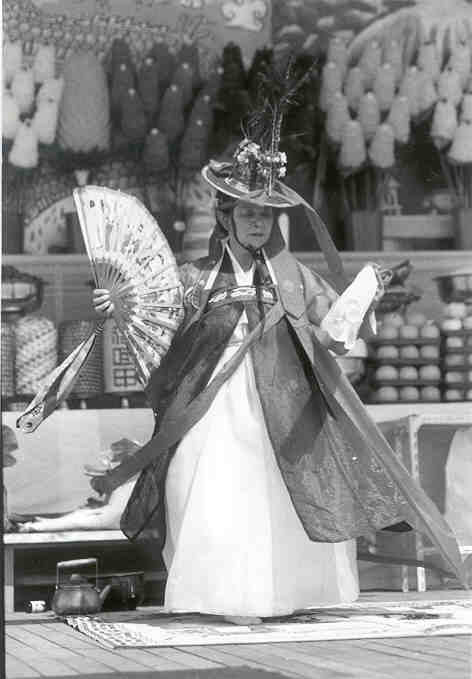
The Head Shaman
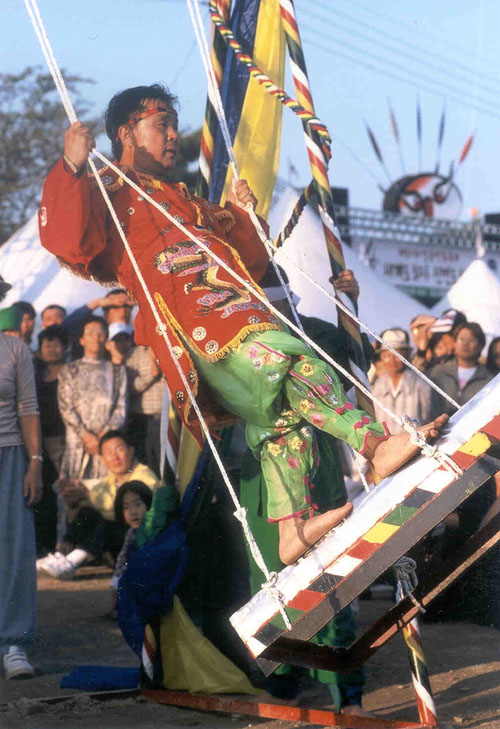
Children's Swing Gone Bad
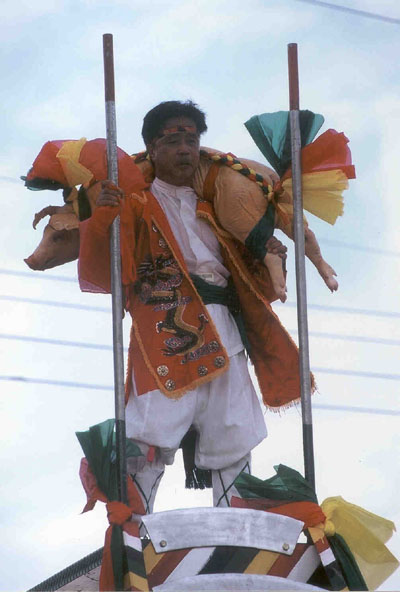
What is more impressive than climbing stairs made of knife blades? Climbing the stairs while carrying a heavy pig carcass!
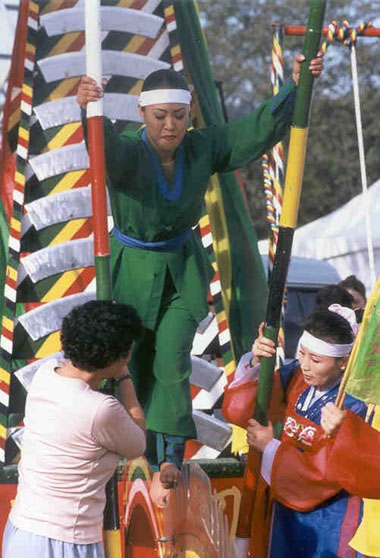
This woman is an apprentice of the man pictured above
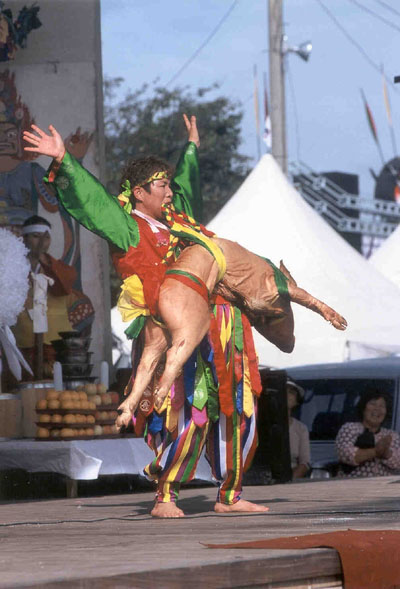
This Shaman was the most clearly possessed of all. She drank huge gulps of Korean firewater and spat it around her. She danced like a demon. Before grabbing this pig, she had another one, her teeth directly in the flesh. Unfortunately those photos didn't turn out perfect.
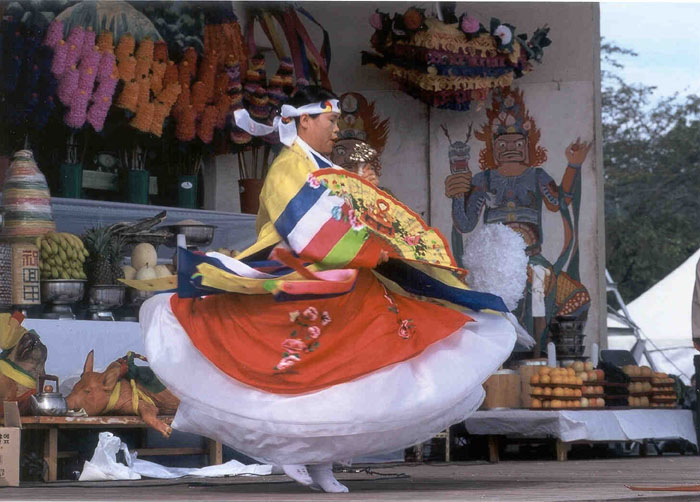
Note the bells in her hand. The shaman shakes bells or knives as a group of drummers provide her an ever more hectic beat. It's believed that the sound of bells attracts spirits. Strong shamans hardly need to ring the bells before the spirits attend. Others must keep at it for a time.